Although we all know that marketing automation makes manual and complicated processes done more efficiently and effectively, the problem that we still find for many companies is where and how to get started.
Are you operating in the SaaS industry and finding difficulties converting leads into customers? Are you wondering how to enhance your lead nurturing strategy? Are you looking forward to creating a more personalized experience for your customers? Are you searching for more effective ways to reach your customers across different channels? Are you overwhelmed with so many tasks that are preventing you from maximizing your sales?
To help you overcome all these concerns, we’ve put together 7 automated workflows that your company should use to fuel growth and success.
7 automated workflows SaaS companies can leverage to fuel success in 2021
1. User Onboarding
Onboarding plays a critical role in educating the customer about the benefits of using a particular product or service. The primary purpose is to build trust with the customers and push them to become active clients.
What should be considered when sending onboarding emails is that they should be triggered at the right time to enhance the user experience with the brand.
The onboarding email flow starts with a welcome email after signup, followed by a series of help articles and video tutorials, which give the user a clear guide on how to get the most out of the features.
Below is an example of an onboarding email:

In order to create an automation for onboarding, it is essential to decide first if your product is providing a trial period or not. If yes, you should take into consideration how to spread the emails within that period before the expiration date. If not, you can allow more days between emails; but the most important part is to give users enough time to discover your product or service without bothering them with excessive emails.
Generally, here’s how an onboarding workflow automation might look like:

2. Win-Back
Targeting subscribers with re-engagement messages may occur from a variety of conditions. Companies can identify what these conditions are based on a suitable fit for both the company and the customer. Below are possible cases where a business would find a need to re-engage with their clients:
- A contact’s free trial expired and said client did not convert into a paid user.
- A lead who did not open an email for 60 days.
- A customer who created an account but does not show any active pattern on the system (activate his account, get started using the tool, etc…)
- A lead who requests a demo but does not schedule a date and time.
To push inactive users to re-engage with you, you can incentivize them with an offer such as a contest or discount. If you do not wish to give away something, you can remind your users of why they subscribed earlier in the process and emphasize the benefits they might miss if they keep on being inactive.
Below is an example of a win-back email:
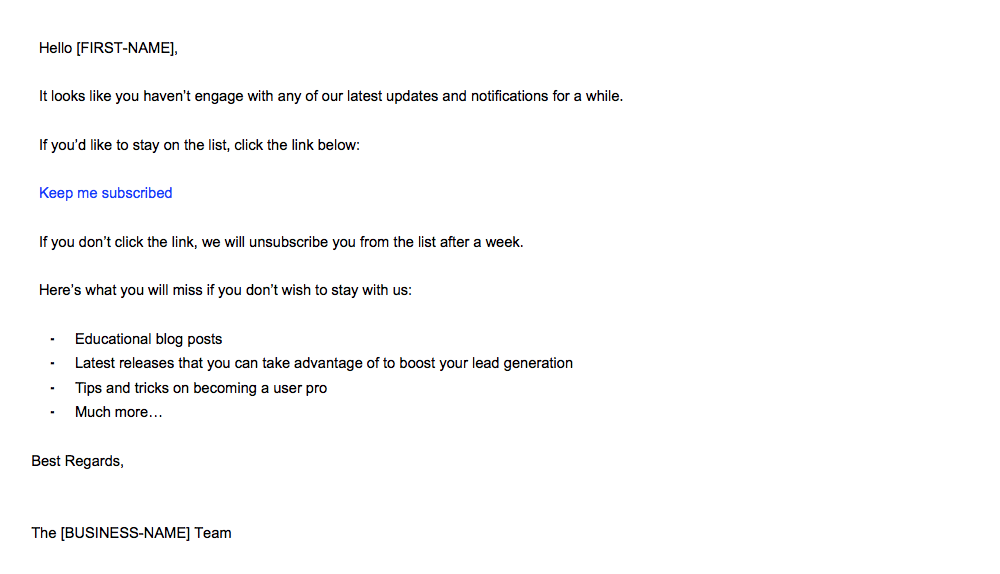
It is critical to identify the criteria that allow you to determine where the customer is and if they have engaged or not. For example, if the condition is “A user’s last engagement date is 60 days from today,” you should send the re-engagement message thereafter.
If they do not respond, you can resend them a final email notification as a friendly reminder giving them the option to update their subscription preferences.
Below is an example of a win-back workflow automation:

3. Sync to Facebook or Google Custom Audience
Reaching customers across external networks like social media is an excellent strategy to create a powerful omnichannel approach. From a targeted perspective, using emails, SMS or browser push notifications with your clients plays a significant role in driving them throughout the funnel, but retargeting that same audience with Facebook or Google ads increases the likelihood of conversions.
SaaS companies can create an automation that adds or removes specific contacts to or from a Facebook/Google custom audience they’ve already created.
For instance, when a user signs up for your service, he will either be added to or removed from an audience list in order to be retargeted via an ad when they come across Facebook or Google. The aforementioned will ask them to carry out further action or remove it from that list.
Note that in order for this automation to function properly, you need to have your contacts in a specific list as this couldn’t apply to anonymous ones. For example, this case would apply when users signed up for a 14-day trial but didn’t add their payment information after this period; when they landed on a page to upgrade but left without completing their purchase order, they would be added to a list “Abandoned Cart” and retargeted with an ad to complete the process. If they convert to paid, they will be removed from that list.
Here’s how the automation might look like:
4. In-app Events
To push your clients to take action immediately, you can trigger alerts in real-time using browser push notifications. Another excellent tactic to help guarantee that your users are not going to miss your messages while they are engaging with your product or offer.
Below are some cases where you need to trigger a browser push notification to drive your users to the next step:
- Register
- Log into the app
- Complete a video tutorial
- In-app purchase / add to cart
- Others
For example, after your users watch a tutorial you can reach out via browser push notification, asking them to implement what they have learned into action.
Below is an example of a browser push notification :
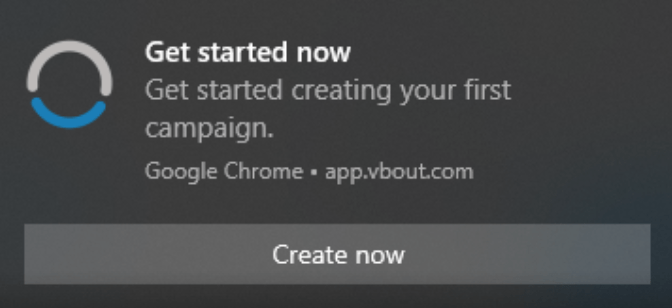
Below is an example of an automated workflow:

5. Lead Magnet and Nurture Sequence
Generating leads is one of the main challenges businesses look forward to doing. An audience’s interest online is paramount to grow and retarget your lead flow. To achieve such a goal, companies can implement a variety of tactics, such as offering free guides and materials like whitepapers, ebooks, case studies, etc.
Another effective way for the users to see value in return for giving you their email address is to attract them through a nurture campaign to help with the decision making process. The execution for this can be from using a variety of targeted messages such as emails, SMS or browser push notifications with value-added content.
For instance, when users sign up to access a guide, they will receive a confirmation email with a link to download it. If they respond, they will be sent another email based on the cadence parameters you have set within the automated workflow. This could include asking them for their feedback with a link to a piece of content that might be relevant to the initial first email they received. The primary purpose is to educate users throughout the funnel until they convert.
Below is an email example:
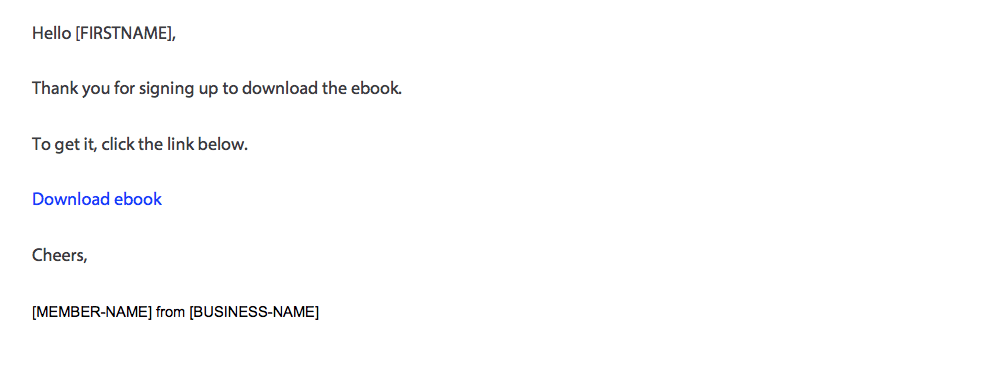
If they respond, they will be sent another email based on the cadence parameters you have set within the automated workflow. This could include asking them for their feedback with a link to a piece of content that might be relevant to the initial first email they received. The primary purpose is to educate users throughout the funnel until they convert.
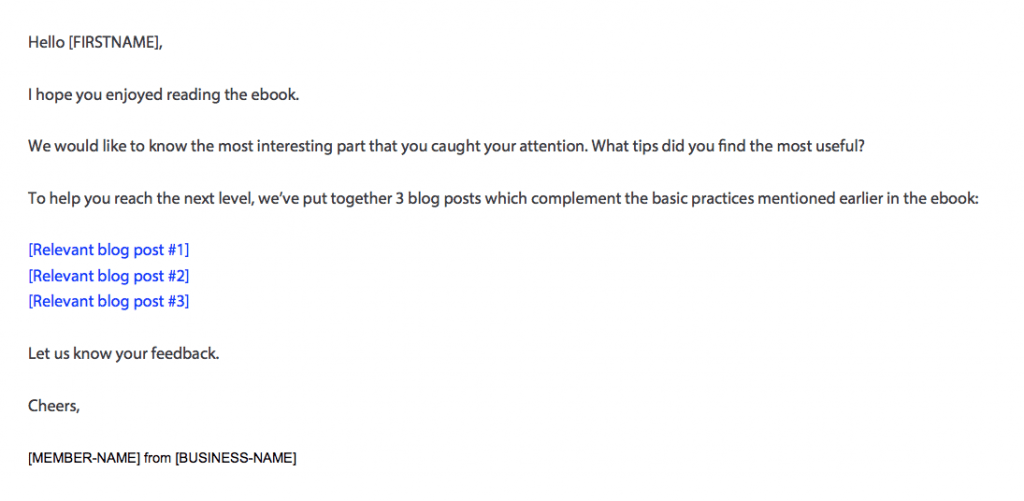
If they don’t click the link or download the guide, an email followup should be concluded a few days later, reminding them to download the guide.
Here is an example of how an automated workflow will look like:
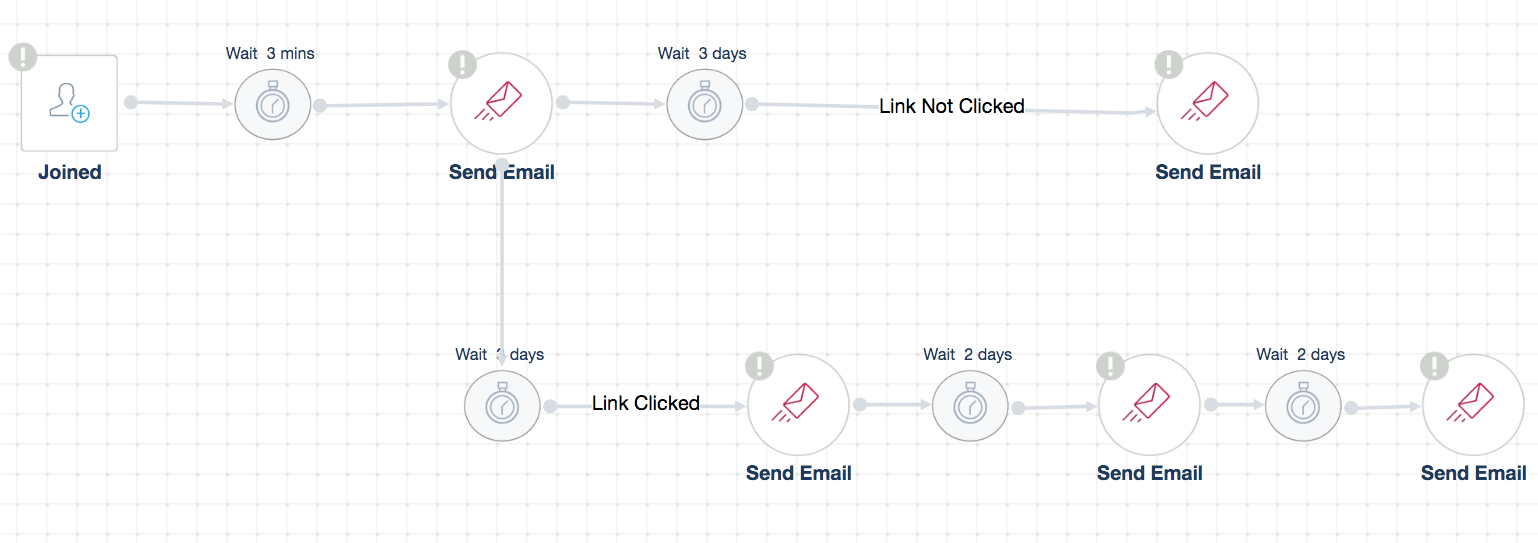
6. Lead Qualification Team Notification
Qualifying leads is a critical point that many SaaS companies take into consideration before assigning them to the sales team. Such interest can be portrayed by your visitors across the website by visiting several product pages in one session, by staying more than 3 minutes on a particular page, or by checking pages that are close to conversions such as requesting a demo or pricing.
There are many cases where these leads show high commercial intent and get one step closer to converting but do not. This can be explained in many ways , the main reasons being that they could not find what they are looking for, the page load time was too slow, price gouging was a concern, got distracted, or lost internet connection, etc.
To address this, you can score your leads based on parameters inspired by the aforementionned and assign them to your sales team to reach out and follow up.
For example, you can create an automated workflow which specifies that once a lead reaches a specific score, you inform your sales team to reach out to them once this is triggered.
Below is an example of an automated workflow:

7. Upgrade to a Paid Plan
Pushing customers to upgrade is one of the most effective ways to reduce churn, as they will be getting more value while you increase your net profit. According to research, increasing customer retention rates by 5% boosts profits by 25% to 95%.
Offering your customers to subscribe to a paid plan and adding value requires them to remember a positive experience about your product otherwise they wouldn’t be convinced to upgrade.
Below are some conditions explaining when the timing could be right to entice your existing customers to upgrade to a paid plan:
- When your customers have been dealing with you for more than X months.
- When your customers’ usage of the current plan gets close to the limit.
- When you add features to a higher plan (i.e: add-ons).
When creating an upsell automation, it is crucial to identify the proper condition for which customers should enter the workflow. For instance, once your clients’ subscription period gets close to the end of the trial period without upgrading, you can send them a reminder email, asking them to upgrade their plan.
If they do not respond, you can follow up with a few more. However make sure your email content has specific “calls to action” (CTA’s) to help them convert at different stages of the journey.
If they do, you can add them to a specific list that contains all your customers who add their billing info to upgrade and send them a thank you email.
** Note: When using a third-party website such as an online payment company like PayPal, you need to create Zap that automatically adds each user to a list that you create from VBOUT, after they add their payment and upgrade their account. The upgrade automation can also be within the onboarding automation but you need to be careful not to have conflict between triggers and actions in other automations.
Creating Zap connectors is also available within VBOUT.
You also have to sync your website’s Native form with VBOUT’s Lists using the Form API. Your automation will not work properly if you do not clearly set up all the required conditions.
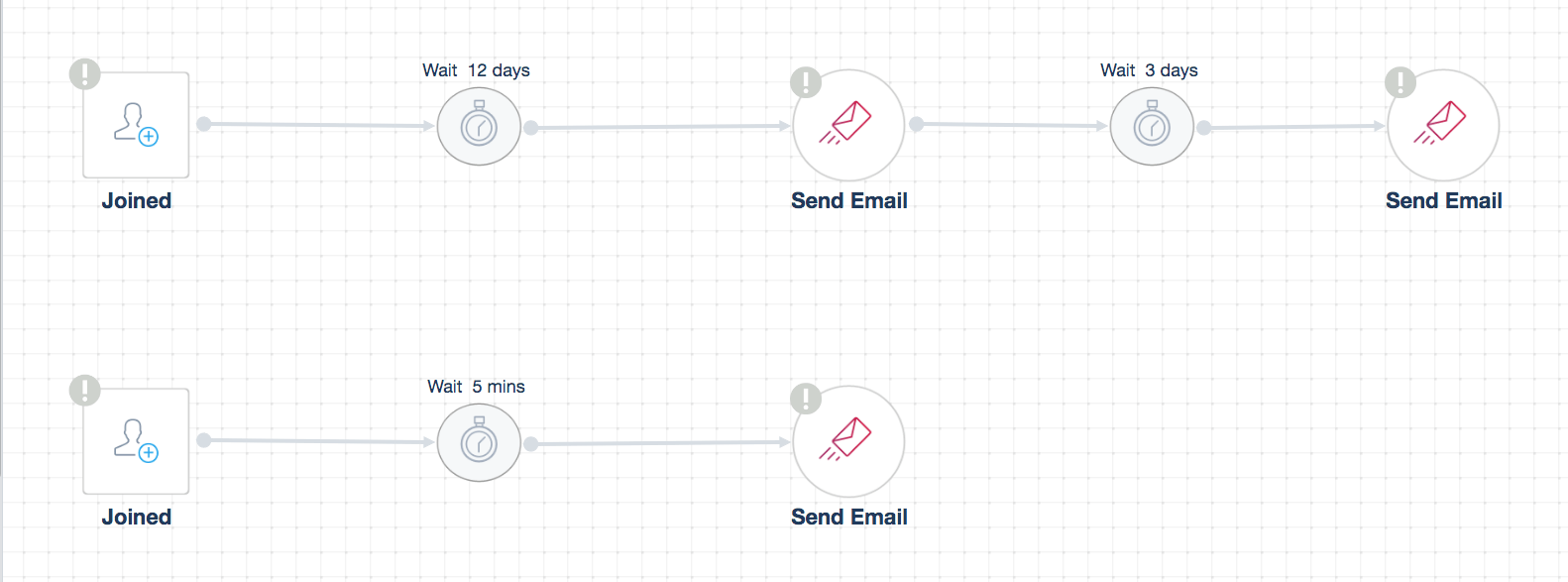
We hope these workflows will help you create an effective marketing automation strategy to push your leads and customers throughout the funnel and communicate with them across different channels.
One more tip: When creating multiple workflows, you need to test every automation and make sure they don’t interfere with each other to avoid any duplication or confusion with the user’s experience. Paying close attention to this would avoid annoying your customers and reduce unsubscribes.
Want to access the full library of email automation templates, check this tool.
Don’t forget to share this article
